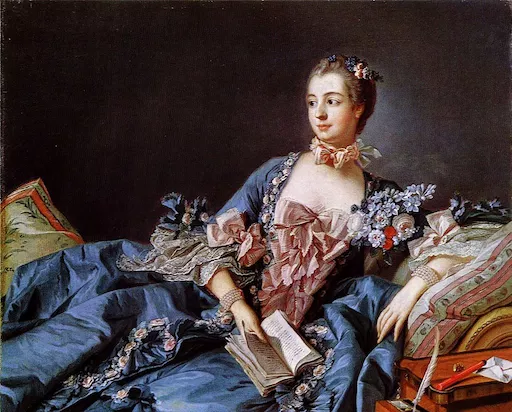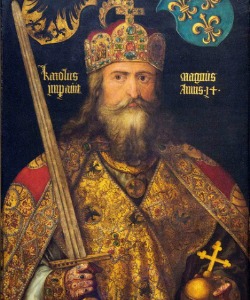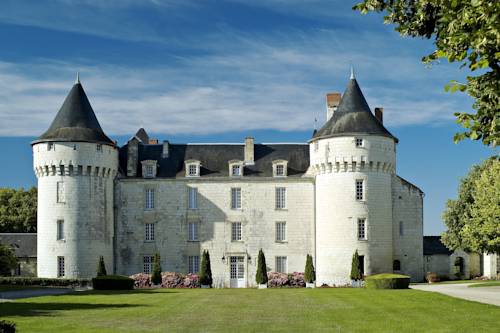Chateau de Chenonceau
A Tale of Resilience: Queens, Mistresses, and the Enduring Legacy of Château de Chenonceau
Château de Chenonceau in France's Loire Valley boasts a unique history. Unlike many castles dominated by men, the tiny palace thrived under the influence of powerful women, each leaving her mark on its architecture and atmosphere.
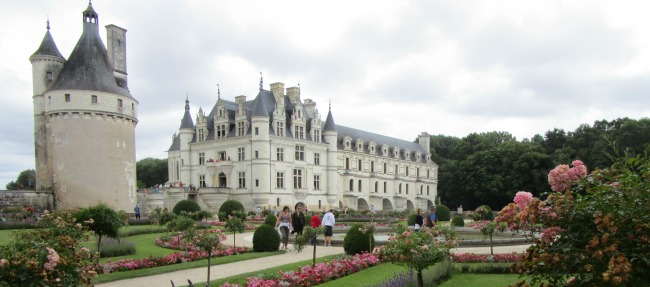 Chateau de Chenonceau, Loire Valley, France
Chateau de Chenonceau, Loire Valley, FranceThe Chateau de Chenonceau has been a women's Palace for most of its existence. The best known 'Queens of the castle' (though not all real queens!) are Diane de Poitiers (mistress of the king), Catharina the Medici (real queen), Gabrielle d'Estrées (mistress of the king) and Louise de Lorraine (real queen).
The stories of these ladies are all told by means of their bedroom, reminding us of their time in the castle. The bedroom, of course, being the most important place for a lady in those days!
DISCLOSURE: I get commissions for purchases made through some of the links in this article.
Diane de Poitiers, mistress of King Henry II, transformed Chenonceau in the mid-16th century
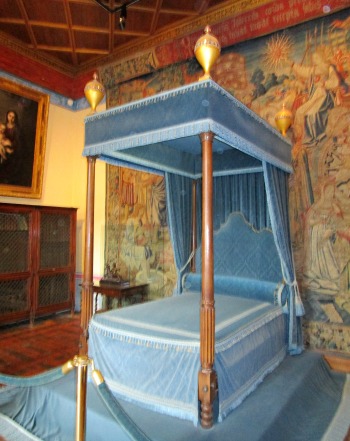 The bedroom of Diane de Poitiers
The bedroom of Diane de PoitiersThe first women that got hold of the palace was Diane de Poitiers. King Henry II of France gave the castle as a gift to his favourite mistress in 1547.
Diana left her mark at the chateau. She is credited with the iconic bridge spanning the Cher River, adding a touch of romance to the chateau's exterior.
Diane also ordered the design of the spectacular gardens, which were very modern in those days. If you arrive at the chateau the garden of Diane de Poitiers is on the left.
Inside the castle, visitors can explore her bedroom, adorned in luxurious blue velvet.
An intriguing detail in this room is the painting of Catherina de Medici above the fireplace. She is observing the bed where it is believed that Diane and King Henry slept. Considering that Catherine was Henry's wife, it seems unlikely that the painting was present during Diana's time!
 The garden of Diane de Poitiers
The garden of Diane de Poitiersthe tides turned for Catherine de Medici.Catherine de' Medici
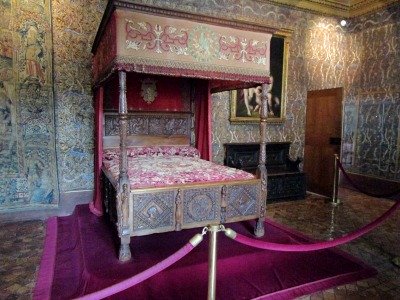 Bedroom of Catherina de Medici
Bedroom of Catherina de MediciAs soon as King Henry II died in 1559, his wife, Catherine de Medici, chased Diane out of the Chateau de Chenonceau. No longer a chated wife, but the queen regent, Catherine claimed Chenonceau as her own.
Ruling France for her young son, she made the Green Cabinet, overlooking the river, her strategic center.
Her most significant contribution is the grand gallery, a magnificent extension built on the bridge, transforming it into a one-of-a-kind ballroom.
Catherine also left her mark with beautiful Renaissance furniture and priceless Flemish tapestries adorning her chambers. Not to be outdone by Diane, Catherine designed her own gardens, a delightful contrast on the opposite side of the chateau.
Catherine, as the Queen mother and regent, wielded her influence over France for an impressive 30-year period. Remarkably, she was the mother of three kings of France, a feat that surely qualifies as a record of some kind!
 Chateau de Chenonceau, grand gallery
Chateau de Chenonceau, grand gallery The garden of Catherine de Medici
The garden of Catherine de MediciThe next chapter in Chenonceau's story belongs to Louise de Lorraine,
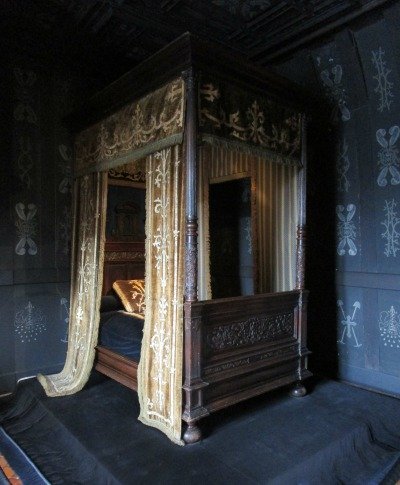 The bedroom of Louise de Lorraine
The bedroom of Louise de LorraineQueen Louise de Lorraine was the daughter-in-law of Catherine de Medici.
After the death of Catherine, she and her husband King Henry III inherited the palace in 1589.
Only 8 months later Louise's husband King Henry III was killed. He was 38 years old, Louise was 36.
Louise was devastated, despite the fact that King Henry III preferred men over her. Following her husband assassination, she retreated into a world of white, the color of grief for French royalty, earning her the nickname "the white queen."
Her bedroom reflects this somber mood, decorated with symbols of death like skulls and white feathers. Louise invited Capuchin nuns to reside in the chateau, replacing the former revelry with a hushed atmosphere. Eventually, Louise moved to a monastery, leaving Chenonceau behind.
Gabrielle d'Estrées, mistress to King Henry IV,
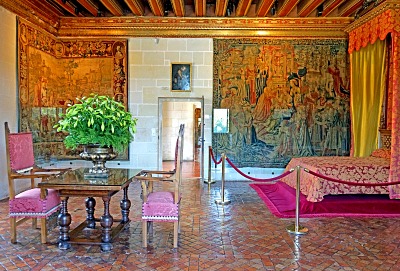 Bedroom of Gabrielle d'Estrées
Bedroom of Gabrielle d'EstréesThe last 'royal' female owner of the Chateau de Chenonceau was Gabrielle d'Estrées.
Gabrielle d'Estrées, though not a queen herself, held immense influence as the favored mistress of King Henry IV. They shared a passionate love story, and Gabrielle bore him several children, including a son legitimized as César, Duke of Vendôme.
Tragically, fate intervened. King Henry's marriage to Margaret of Valois, orchestrated by Catherine de Medici, remained unannulled for some time. However, upon receiving papal approval for an annulment, Henry planned to finally marry Gabrielle, the woman he truly loved. Sadly, this dream was shattered by Gabrielle's sudden death on April 10, 1599, just days after the news of the annulment.
Rumors of poisoning swirled around the court, fueled by the convenient timing and Henry's advisors' disapproval of the planned marriage. Despite the unresolved mystery, Henry honored Gabrielle with a queen's funeral, a testament to his deep affection. While she never resided at Chenonceau, a room within the chateau serves as a poignant reminder of her life and unfulfilled promise as queen.
Another bedroom in the chateau is that of César, Duke of Vendôme, Gabrielle's firstborn son with the king.
He inherited the chateau not from his mother, but from Louise de Lorraine, the white queen.
The course of ownership in this era is a bit fussy.
Louise de Lorraine had inherited the chateau, together with the debts of Catherina de Medici. Catherine died in 1589 and left debts of an estimated $50 million in today's value. Henry IV than bought the chateau from Louise, to avoid her being ruined by this legacy. He gave the chateau to his mistress Gabrielle.
César of Vendôme married Françoise de Lorraine, the niece of Louise of Lorraine (the white queen).
So whether he got ownership of the chateau via his mother or via his wife's aunt, fact is the castle remained in the family of the Dukes de Vendome for generations to come.
In 1720, The Duke of Bourbon bought the castle. The Bourbon kings abandoned the chateau and it never went back to its former glory during the time of the Kings of Valois. King Louis XIV paid his last visit to the chateau in 1650.
Bedroom of the five Queens
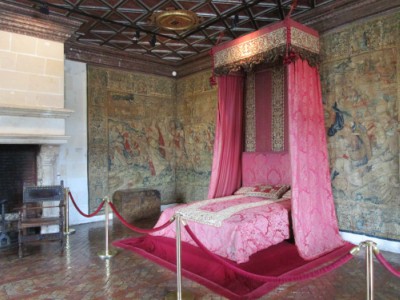 Bedroom of the five Queens
Bedroom of the five QueensThe last bedroom that I will discuss is the bedroom of the five queens. This room honors the two daughters and three daughters-in-law of Catherina the Medici. They all made it to Queen!
Among these women is Mary, Queen of Scots. Raised at the French court, she married Catherine's son Francis, becoming Queen of France alongside Queen of Scots. Catherine's ambition continued with her sons. Charles IX wed Elizabeth of Austria, while Henry III married Louise of Lorraine. Notably, all three sons became kings of France, automatically elevating their wives to the position of queen..
Catherine's influence extended beyond France. Her eldest daughter secured a powerful alliance by marrying Philip II of Spain, becoming Queen of Spain in the process. When the last of her sons passed away, Catherine's daughter Margaret, already Queen of Navarre with her husband Henry, ascended to the French throne, solidifying Catherine's position at the heart of power.
As you can see, Catherine de Medici succeeded very well in marrying off her children and keeping herself in the centre of power. Catherine's political acumen was legendary, and some even whispered of more mystical influences.
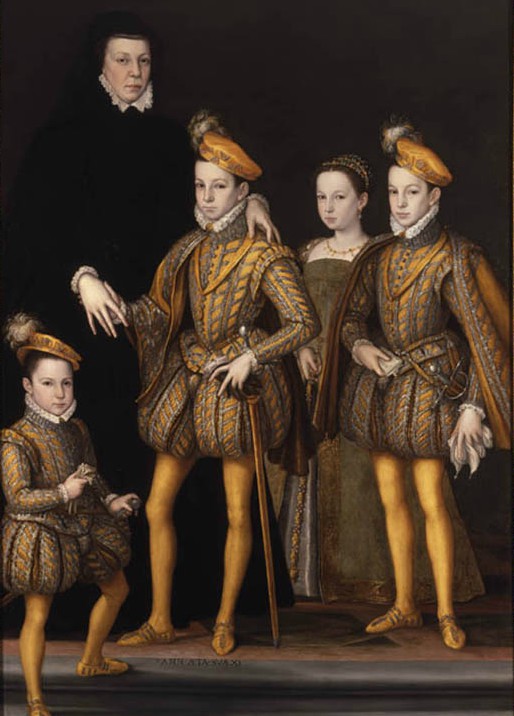 Catherina de Medici with the four of her children that accessed the throne of France
Catherina de Medici with the four of her children that accessed the throne of FranceChateau de Chenonceau today
Today, Château de Chenonceau remains one of the Loire Valley's most popular destinations. To avoid the crowds, plan your visit early and consider purchasing tickets online.
You can go by car, as there is a big parking lot. Prices and opening hours can be found on the official website.
There are several options to visit the chateau as a part of a Loire Valley castle tour from Paris.
